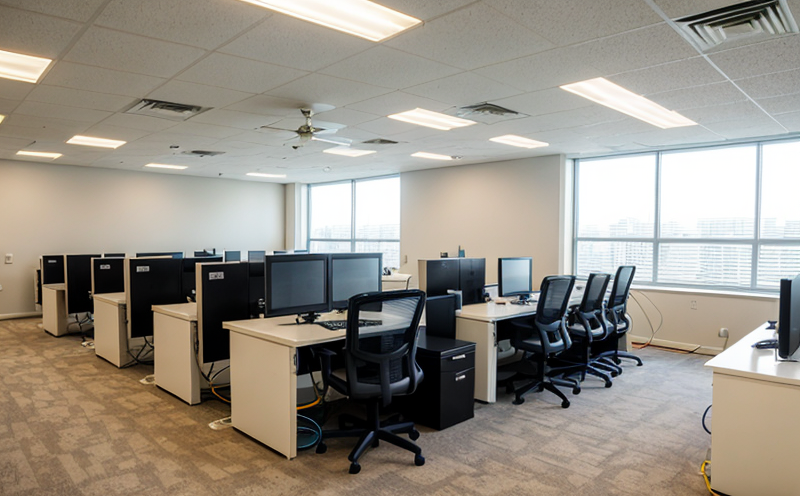ANSI IES LM 82 Energy Performance Testing of LED Packages
The ANSI/IES LM-82 standard provides a method to test the energy performance of light emitting diode (LED) packages. This testing is critical for manufacturers and suppliers of lighting products as it ensures compliance with regulatory requirements and helps in optimizing product design for energy efficiency.
Testing according to LM-82 involves measuring the optical, electrical, thermal, and mechanical properties of LED packages under various operating conditions. The primary goal is to accurately determine the lumen maintenance and color stability over time. This data is essential for manufacturers to ensure their products meet the stringent energy efficiency requirements set by authorities such as the U.S. Department of Energy (DOE).
The LM-82 standard requires that testing be conducted in a controlled environment, typically a climatic chamber, to simulate real-world operating conditions. The test specimens are subjected to various thermal and electrical stresses to assess their performance over time. Key parameters include forward current, voltage, and temperature during operation.
During the testing process, detailed data on luminous flux, color coordinates, and efficacy are recorded at specified intervals. This information is used to calculate lumen depreciation factors (Ld) which provide a measure of how much light output diminishes over time due to aging effects. Accurate testing according to LM-82 ensures that the energy performance claims made by manufacturers are reliable and verifiable.
The importance of this test cannot be overstated, especially in today's market where consumers and regulators demand high levels of energy efficiency from lighting products. By adhering to LM-82 standards, manufacturers can ensure their products not only meet but exceed regulatory requirements, thereby enhancing their reputation and competitiveness in the market.
In addition to compliance with regulations, testing according to LM-82 offers valuable insights into product performance that can be used for continuous improvement. The data generated from these tests helps engineers refine designs, optimize component selection, and improve overall product reliability. This leads to longer-lasting products with better energy efficiency, which is beneficial not only for the manufacturer but also for end-users who benefit from lower operating costs.
Moreover, LM-82 testing plays a crucial role in certification processes required by various bodies such as UL, ETL, and others. These certifications are essential for product marketing and sales, ensuring that products meet stringent quality standards recognized globally. By successfully completing LM-82 tests, manufacturers can gain access to broader markets where these certifications are required.
Given the importance of this testing in the lighting industry, it is crucial that labs conducting such tests adhere strictly to the specified procedures and use state-of-the-art equipment for accurate measurements. This ensures reliable results that can be trusted by all stakeholders involved—from manufacturers to regulatory bodies and end-users.
Why Choose This Test
- Compliance with International Standards: LM-82 ensures compliance with global standards for energy efficiency, making it easier for manufacturers to enter international markets.
- Enhanced Product Quality: By adhering to this standard, manufacturers can improve the quality and reliability of their products, leading to higher customer satisfaction.
- Regulatory Requirement Fulfillment: LM-82 testing is required by many regulatory bodies around the world, ensuring that products meet stringent energy efficiency requirements.
- Market Differentiation: Products tested according to LM-82 standards can be marketed as meeting advanced quality benchmarks, which can differentiate them from competitors in the market.
Customer Impact and Satisfaction
The impact of ANSI/IES LM-82 testing extends beyond regulatory compliance to include direct benefits for consumers. By ensuring that lighting products meet stringent energy efficiency standards, this test contributes significantly to reducing electricity consumption and associated costs. This not only helps in lowering overall utility bills but also supports environmental sustainability by decreasing carbon emissions.
For manufacturers, the results of LM-82 testing provide valuable data for improving product performance and reliability. This leads to enhanced customer satisfaction as consumers receive products that perform consistently well over time. Additionally, successful completion of these tests can lead to greater market acceptance and increased sales volumes, further enhancing customer satisfaction.
In summary, ANSI/IES LM-82 testing plays a pivotal role in improving the quality and reliability of lighting products while contributing towards energy conservation efforts worldwide. Its impact is felt by both manufacturers and end-users alike, making it an indispensable service for those involved in the lighting industry.
International Acceptance and Recognition
- UL: The Underwriters Laboratories (UL) recognizes ANSI/IES LM-82 as a key standard for ensuring the safety and performance of LED lighting products.
- ETL: ETL certification, issued by Intertek, includes compliance with ANSI/IES LM-82 as part of its rigorous testing protocols.
- CQC: China Quality Certification Center (CQC) requires LM-82 testing for certain LED lighting products to ensure they meet stringent quality and safety standards.





